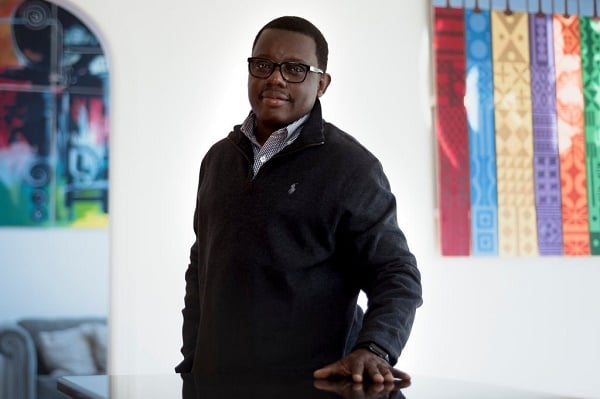Quite a lot has been said and written about much of Africa’s timeless artifacts “forcefully” carted away during the epoch of colonialism and hoarded in foreign museums till date.
Yet, only only a handful of tourism moguls have shouldered the responsibility of uncovering and communicating the artistic relevance on which existing figurines and paintings are hinged — beyond the advocacy for retrieval.
Amid the dearth of such individuals in Africa’s visual art scene, New York Times is celebrating Olusanya Ojikutu, a Nigerian artist and museum curator, who has advanced beyond merely displaying artworks to having people talk about them.
A tour of the 50-year-old’s home revealed a living room filled with by traditional and contemporary African art including sculptures, paintings, and decorative prints that are a sight to behold.

With Ojikutu’s sculptures spanning up to a century old, his collections also include artifacts that had mediated between local people and their ancestors’ spirits believed to offer protection from evil forces.
Among them are a wood Bamana Chi Wara headdress from Mali, a metal Kota reliquary guardian figure from Gabon, and a wood-fiber Bwa plank mask from Burkina Faso.
Speaking on the force that informs his choice of works as an art curator, Ojikutu said his purchases or displays are inspired by what he described as “love at first sight” — a connection he says transcends the physical plane.
“The connection I feel towards any piece I buy, own or display is loved at first sight. Typically, it’s a numinous experience; the work speaks to me. I feel instant visual attraction followed by an unconscious burst of inspiration,” he said.
“Ile-Ife is considered the ancestral home of the Yoruba and the birthplace of the gods and humankind. I have a natural connection to Yoruba history, art, and culture. I also feel a connection when I buy artists I know.”
Ojikutu left Nigeria for the United States in the mid-1990s. He and Yinka Ojikutu, his wife, both work and live with their two teenage sons in a Washington suburb.
According to him, he collects pictures from a variety of artists like Andrew Dosunmu, Zak Ové, George Osodi, Barthélémy Toguo, and J.D. ’Okhai Ojeikere.
He, however, shares these alongside his sculptures with the public by having tourism magnates and other stakeholders brought over to talk about art.
“African art has long been seen as a monolith, but it really has many different origins. I try to show that expanse of art forms and visual cultures in my collection,” he added.
“We make sure that, when you leave, you see African art as beautiful and as conversation pieces that inspire thoughtful concentration to be fully appreciated.”
Copyright 2025 TheCable. All rights reserved. This material, and other digital content on this website, may not be reproduced, published, broadcast, rewritten or redistributed in whole or in part without prior express written permission from TheCable.
Follow us on twitter @Thecablestyle

